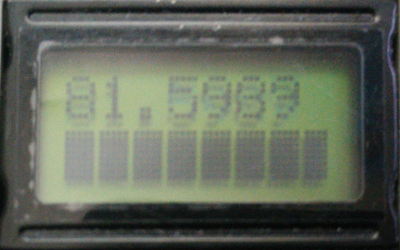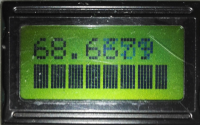70 MHz (4 metre) FM transceiver
70 MHz, a.k.a 4 metres, sounds like a good band to play with. It is close to HF, so that construction techniques can be on the simple side, but also high enough so that you don't need huge aerials - a half-wave dipole will only be about 2 metres across.
One thing to note, though. The 70 MHz band is not available in all countries. 70 MHz was freed up when countries closed down their VHF (Band I (VHF low) 54–88 MHz) TV networks. Finland was one of them. However, even in countries that permit operation in this band, there can be differences.
Finnish allocation is from 70.0 MHz to 70.3 MHz.
| Frequency | Use | Notes |
|---|---|---|
| 70.000 - 70.050 MHz | CW, MGM* and propagation beacons | Maximum transmission bandwidth of 1 kHz is permitted. |
| 70.050 - 70.175 MHz | Narrowband Modes (CW/SSB/MGM) | Narrowband modes with a maximum bandwidth of 2.7 kHz: CW,SSB and MGM. |
| 70.175 - 70.225 MHz | AMATEUR RADIO TRAFFIC NOT PERMITTED | |
| 70.225 - 70.250 MHz | Narrowband Modes (CW/SSB/MGM) | Narrowband modes with a maximum bandwidth of 2.7 kHz: CW,SSB and MGM. |
| 70.250 - 70.300 MHz | FM | Channelised Operations & 12.5 kHz spacing Main calling frequency 70.275 MHz. |
* MGM : Machine generated morse.
Source: Michael Fletcher OH2UAE
Because my work space, skills and tools available are pretty limited, I am going to use cheap kits as much as possible. Most of the kits I buy, for the same price, you could hardly buy a few resistors from local shops. The plan is to start with a small kit, modify it, add to it and so on. Grow it, evole it and learn about what you're doing. So, here goes...
The plan:
I bought three FM "70 MHz" wireless microphone kits. I bought three, so that I would build the first "as is", to give a base point to work from, which I'll use as a reference signal source, set to 70.450 MHz, the FM calling channel. Then, the second one, I will build with mods and add-ons straight away. the third kit will, hopefully, become the receiver. In the end, it will become a proper 70 MHz transceiver.
For this project I used the Eqkit RF-01 Wireless Microphone. To measure the frequency, I have the Gooit GY560 Frequency counter. Both were bought from the Banggod website, but as of this update (05/01/2023), neither seem to be available from there. Both can easily be found with a web-search and still bout very cheaply.The kit cost a couple of Euros and the frequency counter cost about EUR 15.00.
Gooit GY560 Frequency counter
The Gooit GY560 Frequency counter is specified to cover from 50 MHz to 2.4 GHz, but it will still measure down to about 10 MHz.
I have checked it against a couple of amateur radio transmitters and it measures spot-on in the 2-metre and 70-centimetre bands, so I believe it is OK for purpose.

The circuit is a simple FM transmitter with a Hartly LC oscillator circuit:

I built the first FM "70 MHz" wireless microphone kit. The information provided states that the default frequency is about 70 MHz. I used the GY560 Frequency Counter to check this, and... It's actually just above 80 MHz. I have actually build a couple of these in the past and in all cases, they are just over 80 MHz. The 4 metre radio amateur band is from 70.0 to 70.5 MHz. So, we're way off to start with.


The instructions suggest that you can change the frequency by stretching the coil, but when you make a coil longer, you lower the inductance, so the resonant frequency increases.
I did a little test by pushing my thumb nail between the turns of the coil to stretch it a little bit. You can see that the resonant frequency increases:


If you are making this as a "wireless microphone" and want to receive it on a regular Band II (88 to 108 MHz) FM radio, then you should increase the length of the coil until you can recieve the signal on your radio.
In this case, however, we need to lower the frequency. So, we need to either increase the inductance or the capacitance. To increase the inductance, we would need to add more turns. This isn't practicaly possible for this kit - unless you can find a suitable bit of copper wire. The other way is to increase the capacitance value.








